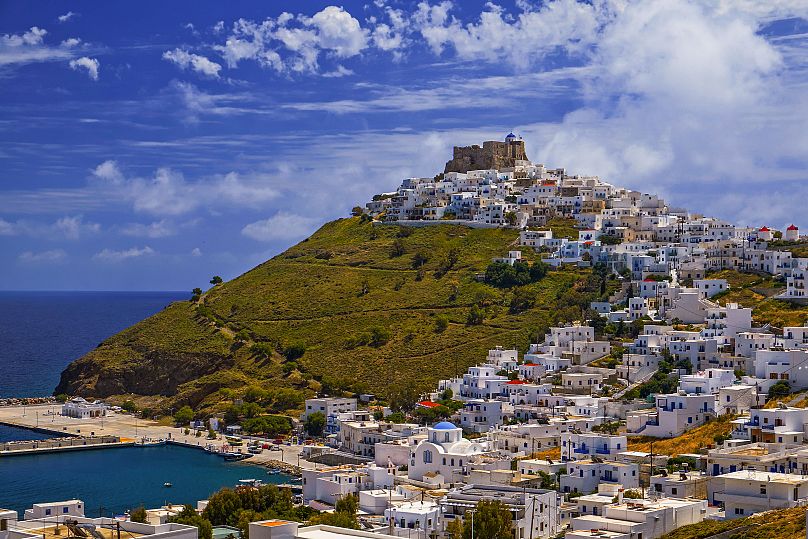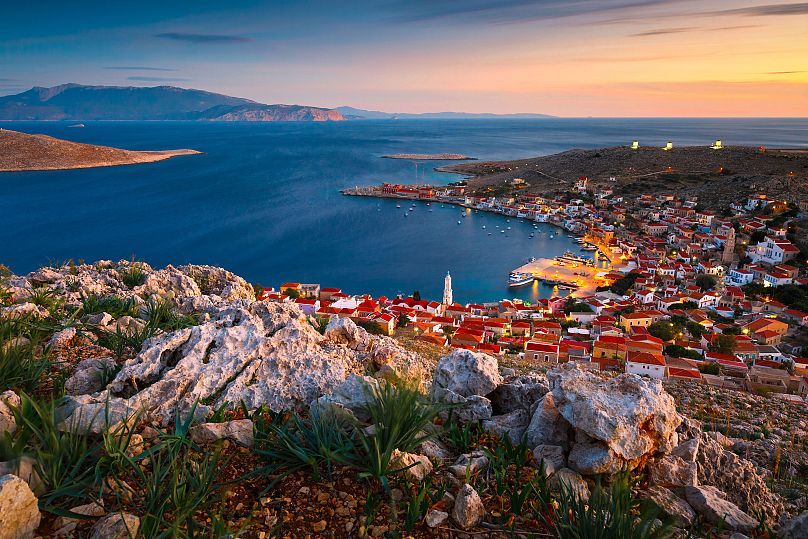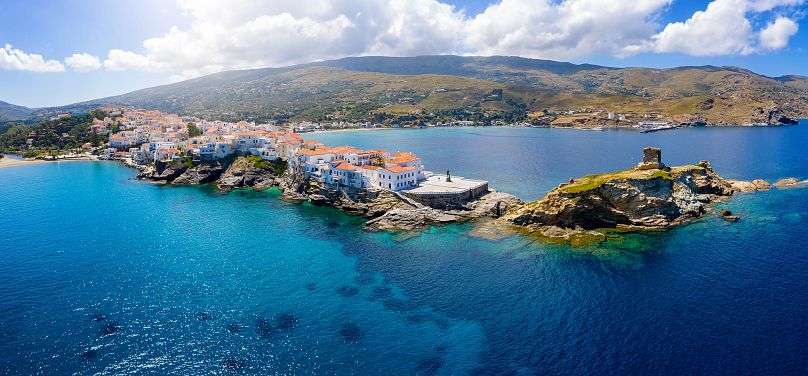No longer content to rest on its laurels as a sun-drenched playground for European holidaymakers, Greece is undergoing a tourism revolution.
The aim is twofold: to introduce visitors to another side of Greek life, away from the raucous nightclubs and Mamma Mia t-shirts, and to transition the country into a green economy, protecting its ecosystems and traditional ways of life and promoting sustainability initiatives that encourage responsible tourism and local self-sufficiency.
Swerving the crowds in the Dodecanese
The Dodecanese archipelago, to the southeast of the country, has Rhodes as its main transport hub, with direct flights from around Europe. The charms of Rhodes are no secret, and it receives millions of visitors every year, but boats from the island can whisk you away to a number of peaceful and pretty little islets.
From 1912 to 1948, the Dodecanese islands were owned by Italy, and you’ll still see grand Italianate houses punctuating the low-rise streets.
The sleepy whitewashed streets of Chora, on butterfly-shaped Astypalea, tumble down from its castle to beaches lapped with turquoise waters. At first glance, there is nothing to suggest that the island is undergoing a clean-energy revolution.
Pay closer attention and you’ll notice the electric bikes, buses and even utility vehicles gliding soundlessly through the streets. The local car-sharing scheme, astyGO, is available to tourists as well as residents, and has seen the number of cars on the island drop by a third.
The electric bikes, scooters and cars will soon be powered entirely by renewable energy from wind and solar panels, making Astypalea the first ‘smart island’ in the Mediterranean, with zero-emissions mobility by 2030.
Chalki may not possess the rolling green hills and long beaches found elsewhere in Greece, but as you sail into the town of Emborio, with its neoclassical mansions and pretty red-tiled roofs, the colourful view is second to none.
Walk up the hill to the windmills and the abandoned medieval village of Chorio, a legacy of those times in which islanders had to protect themselves from pirates.
The first Greek island to move away from carbon-based power and become completely energy-autonomous, Chalki runs on electricity from a community-owned solar park. Its vehicles are powered entirely by renewable energy, and it even has a solar-powered boat to take visitors on eco-friendly excursions to sandy coves around the island.
The archetypal Greek island, serene Lipsi has a tumble of whitewashed houses, vibrant cornflower blue paintwork and a string of secluded beaches. It’s small enough that you can cross it on foot, accompanied by the tinkle of goats’ bells and the faint aroma of wild herbs.
As part of a wider campaign to reduce its carbon footprint, Lipsi has declared war on plastics, banning sunbeds and single-use cups and cutlery. Solar-powered streetlights, motion-activated to increase brightness when people or cars approach, have now been installed across the island.
Tilos’ fertile valleys and arid hills are home to more than 150 species of rare birds, 400 varieties of flowers and herbs… and only 500 people. The entire island is a protected ecological park, where hunting is banned and birdwatchers might catch a lucky glimpse of a Bonelli’s eagle, a long-legged buzzard or Eleonora’s falcon.
It was also the home of the last European dwarf elephants, and their fossilised remains can be seen in the Charkadio Cave.
Funding from the Horizon 2020 programme enabled the island to build a hybrid power station with solar and wind farms, and the island is now completely energy self-sufficient. Its vehicles are electric, and where there was once a landfill problem, there is now an impressive recycling rate of 80 per cent, thanks to the Just Go Zero Tilos zero-waste project.
Protecting the ancient ways of the Cyclades
Every year, hundreds of thousands of visitors head for the party islands of the Cyclades – Mykonos, Ios, Santorini, Paros – completely oblivious to the Mediterranean jewels that dot this part of the Aegean.
Just a short boat ride from these centres of hedonism, you’ll find islands of rolling hills grazed by goats, wooden fishing boats jostling in harbours, all-but-deserted beaches curling around sapphire bays, and sleepy white villages where ancient tavernas sit next to domed churches.
The sheer cliffs and steep terraced slopes that appear as the island heaves into view give Folegandros a slightly forbidding look, but this is one of Greece’s most welcoming spots. Chora, its capital, is a tangle of spotless white houses draped in bougainvillea, and Katergo beach is a secluded strip of paradise, with shallow azure water, fine sand and a delightful lack of tourists.
The island has a proud tradition of women’s associations, and the latest incarnation of these has created a project to boost the local economy while protecting the environment. Raising funds by selling their typically Cycladic handicrafts online, the women have used the money to buy reusable plates, glasses and cutlery, with the aim of eliminating single-use plastics from Folegandros and its neighbouring islets.
More verdant than most, Andros is known for the wide range of flora and fauna across its lush hillside and alongside its gentle streams. The island’s splendidly diverse ecosystem does not end there, however, and out beneath its cerulean waters are sea grass meadows that are home to myriad forms of marine life.
On top of this, the Posidonia Meadows create sand, filter seawater, limit coastal erosion and absorb vast amounts of carbon. However, the meadows are gradually diminished when yachts’ anchor drag along the sea bed, wiping out the sea grass. The Cyclades Posidonia Alert is a local initiative to raise awareness of the problem, educating yacht owners and encouraging responsible anchoring.
Immortalised in the film Le Grand Bleu (The Big Blue), Amorgos is one of the Cyclades’ most charming islands, a captivating blend of secret coves, sugar-cube houses, winding cobbled alleyways, and hiking trails with exhilarating views.
It has long been home to a large fishing community, but in recent years the waters around Amorgos have been subject to overfishing, with consequences for both the environment and the local economy. To address this, non-profit organisations have teamed up to create the ‘Fish Smarter’ initiative, which seeks to educate fishermen and provide them with alternative means of income, such as fishing tourism or taking visitors out to watch the sun set.
Protected sea zones have been set up for the fish breeding seasons, and during this time money raised will pay the fishermen to instead channel their efforts into cleaning up local bays, giving the marine life a chance to thrive again.




